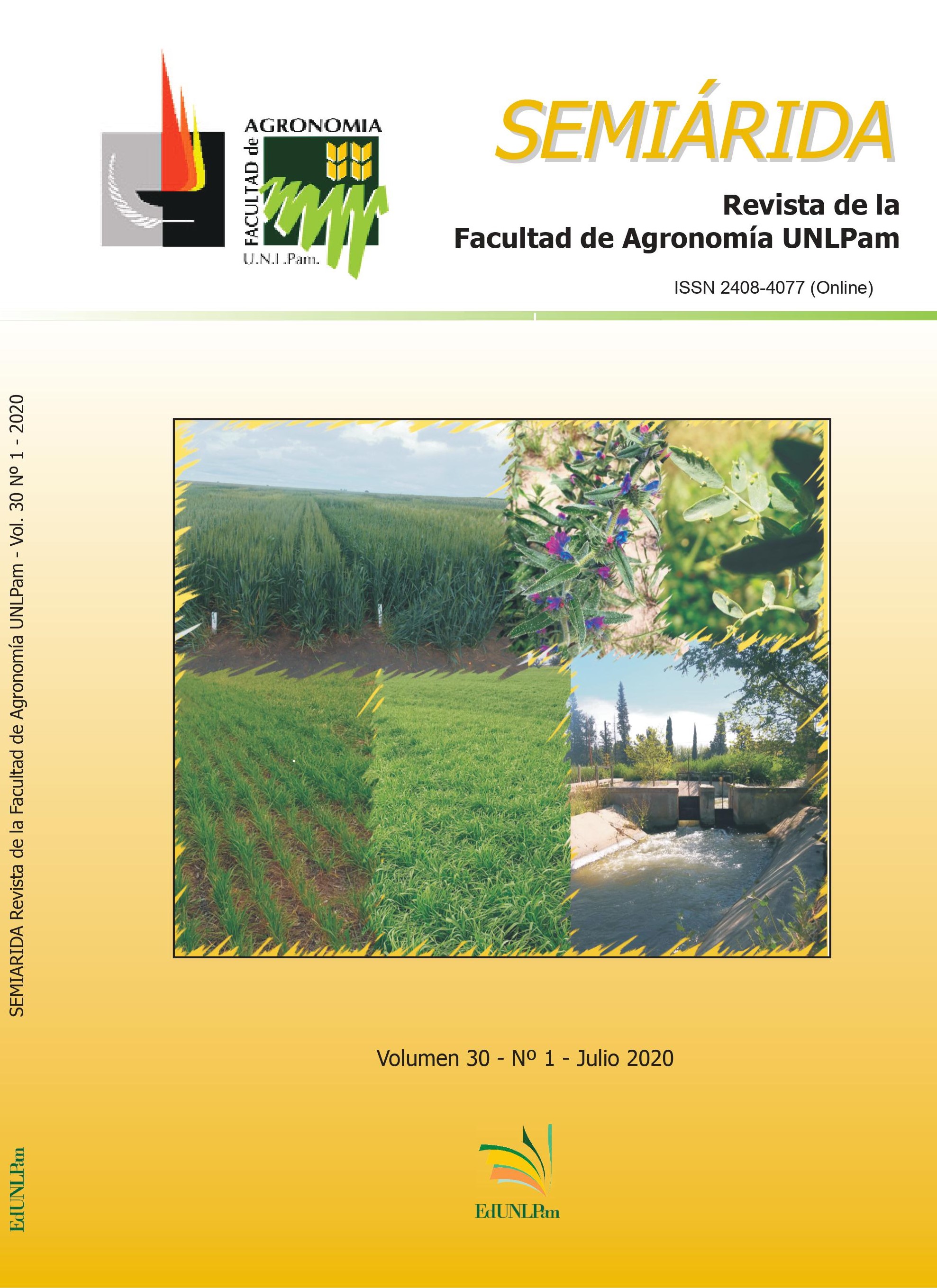Effect of radiation capture during the critical period on wheat and triticale grain yield in the semiarid Pampas region
Keywords:
Canopy interception, Production, Winter grain cropsAbstract
The present work was carried out in the experimental field of the Faculty of Agronomy UNLPam. It evaluated the relationship between photosynthetically active radiation (PAR) intercepted by the crop during the critical period and yield of bread wheat (Triticum aestivum l.), durum wheat (Triticum durum l.) and triticale (X Triticosecale Witt). Also evaluated the effect of nitrogen application to tillering. In the first date of sampling (October 3) three varieties of triticale showed increased interception than the varieties of wheat bread and wheat with nitrogen fertilizer. The variety of wheat bread "Baguette P13" had increased interception in control. On remaining dates of sampling the varieties of the three species had an unlike behavior, although the varieties of durum wheat were lower PAR interception. The addition of nitrogen to tillering significantly improved the percentage of PAR interception. The yield of the modern varieties of wheat bread was bigger than the ancient ones, being explained by a major IC, more than for major PAR interception. The addition of nitrogen compensated the yield fall when the flowering date more lately.
Director: Fernández, Miguel Angel
Downloads
Downloads
Published
Issue
Section
License
La Editorial de la Universidad Nacional de La Pampa (EdUNLPam) exigirá a los/as autores/as la firma del siguiente documento:
La EdUNLPam lleva a cabo la publicación del artículo: (Título del Artículo) en SEMIÁRIDA Rev.Fac.Agron UNLPam ISSN 2362-4337 (impresa) ISSN 2408-4077 (en línea), del cual el/los abajo firmantes son autores de una o más partes. En el mismo acto, el/los autores entregan exclusivamente a la EdUNLPam todos sus derechos protegidos por las leyes de propiedad intelectual que rigen en la Argentina para reproducir, publicar, editar, fijar, comunicar y transmitir públicamente en cualquier formato o medio impreso o electrónico, inclusive internet, el artículo enviado a publicación e incluirlo en índices o bases de datos nacionales e internacionales. A cambio, la EdUNLPam entrega a los autores la autorización para la publicación o reimpresión con ines académicos y educativos en cualquier libro o medio de divulgación, con la sola obligación de citar el artículo original publicado en la EdUNLPam. Cada autor acuerda en que el material provisto a la EdUNLPam es un trabajo original, que no ha sido impreso o publicado en cualquier otro medio con anterioridad y que no vulnera derechos de terceros. El Primer autor tendrá la posibilidad de leer y corregir el artículo ya editado como “prueba de galera”, pero si el autor no devolviera esas correcciones de la prueba de galera dentro del tiempo especificado, el proceso de producción y publicación podrá proseguir sin la aprobación del autor. El/los autor/es no recibirán compensación monetaria de la EdUNLPam por el uso del material contenido en este artículo y asumen la responsabilidad de las opiniones vertidas en él.






.png)



22.png)



.jpg)




.jpg)
